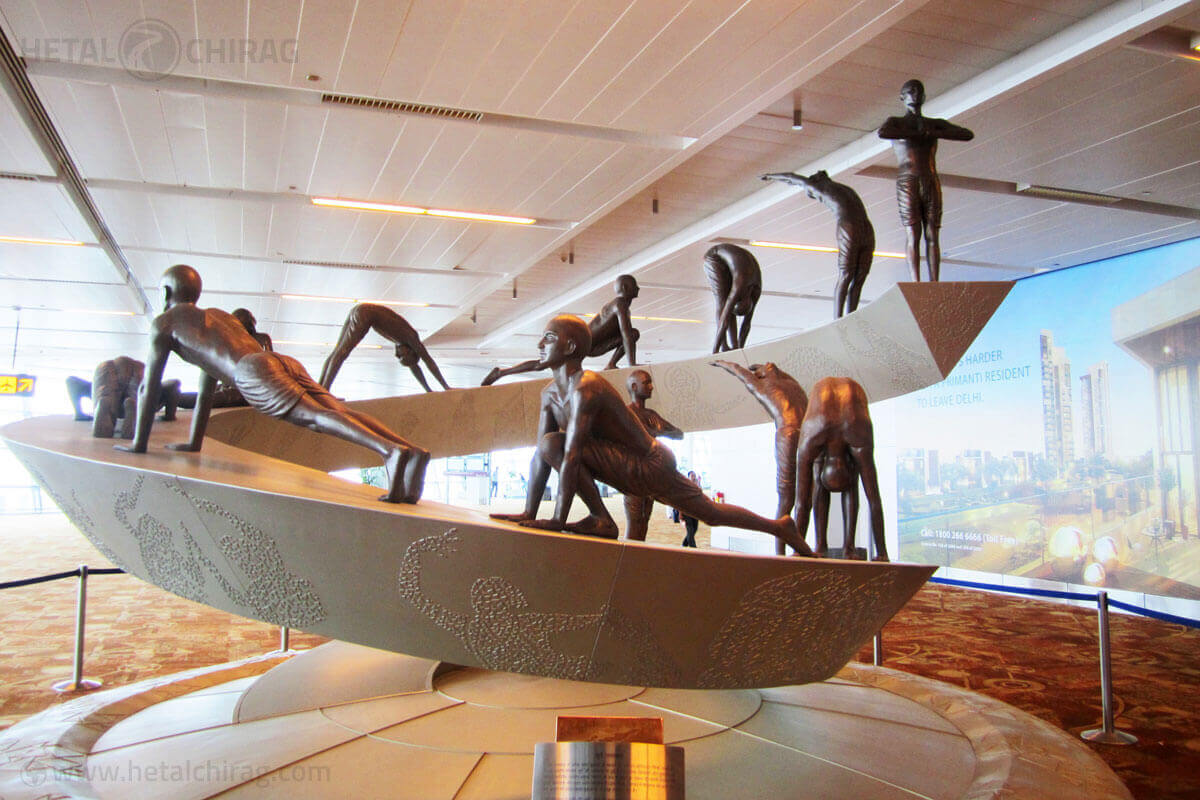If you have taken a flight to Delhi, the fascinating sculpture of the twelve asanas of Sūrya Namaskāra might look familiar. The Sun Salutation sculpture depicting a series of yogic postures is located inside terminal T3 at the Indira Gandhi International Airport of New Delhi, India.
The yogic sculpture warmly welcomes visitors from all over the globe to the India’s capital, Delhi. You can clearly see the graceful transitions from one yoga asana to the next. The sculpture reminds you that a regular practice of Surya Namaskar can be a well-balanced exercise for the mind, body and soul.
After admiring the beautiful sculpture, we continued our journey of exploring Delhi. If you are planning a trip to northern India, we would definitely recommend spending a few days in Delhi to check out some of the most amazing historic monuments such as the Red Fort, Qutub Minar, India Gate, Jama Masjid, Humayun’s Tomb and much more.
Before heading to the Taj Mahal in Agra, we visited the majestic Red Fort in Delhi.
When we were walking around inside the Red Fort, it felt like visiting ancient India during the Mughal era. If you love history and architecture, you are definitely in for a treat. There is just so much to absorb. If you want to make sure you do not miss out on the most interesting stories behind the minute details, it is a good idea to get an audio guide.
Inside the Red Fort there is a single story structure supported on the marble pillars called Diwan-e-Khas. The beautifully crafted Diwan-e-Khas was a special hall where the Mughal Emperor used to meet private audience such as ministers and representatives from different parts of the kingdom. With intricate marble inlays and floral designs, Diwan-e-Khas looks absolutely stunning even after 400 years from when it was made. You can only imagine how glorious it must have looked during the Mughal era.
Did you know that the Red Fort was originally white? In fact, the name “Red Fort” was given by the British because of the red stones and bricks of the boundary walls which were constructed to provide security to the royals.




